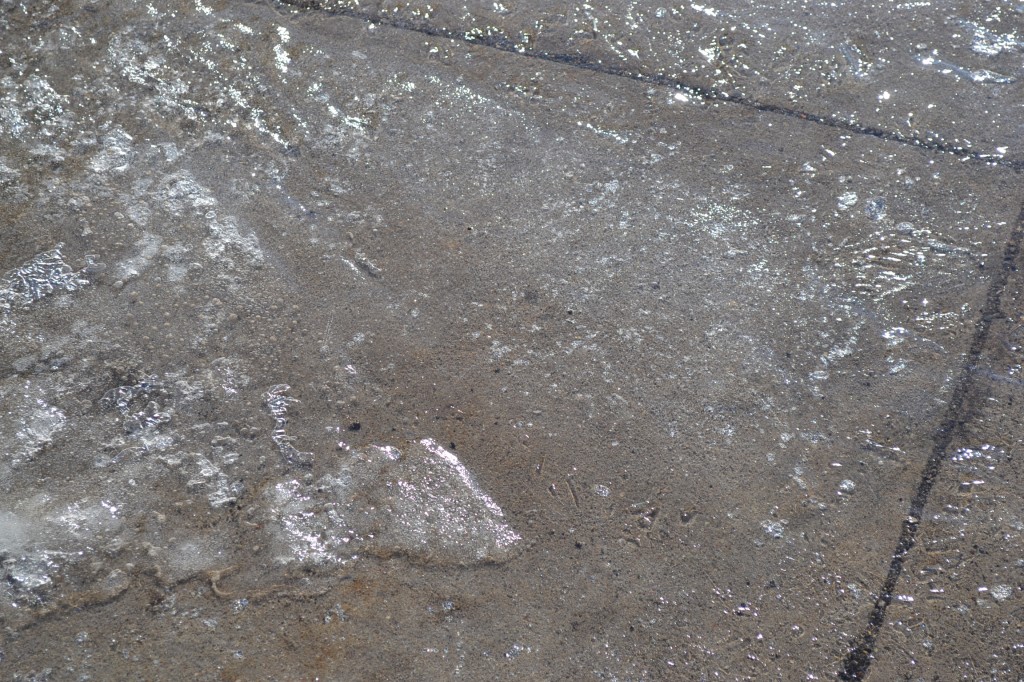The term black ice always gets thrown around this time of year. What is black ice exactly? Black ice is a thin layer of ice, snow or sleet build up on asphalt or cement surfaces. The layer of ice is so thin that you cannot see it. The only thing that you can see is black asphalt or dark cement, hence the term black ice. As we approach winter, black ice will become more relevant in our daily lives. If you are a business or apartment manager, you can reduce your insurance liability by applying sand or salt products to your property. Black ice can pose a significant threat if you have lots of stairs or hills on your property. Pre-treating your property prior to an ice storm will reduce the chances of ice accumulating.
How to reduce black ice on your property.
Pre-treat your parking and sidewalk areas. Pre-treating your parking and sidewalk areas with a liquid de-icer will help minimize your ice exposure. Finely ground rock salt used as a pre-treater will also help stop ice from forming. Light rain or freezing mist can easily be stopped by pre-treating your hard-surfaced areas.
Sanding for traction on your property. Applying sand to your property will help give you traction, but it will not significantly melt black ice. Since black ice is usually a thin ice coating, sand can be a productive tool. Sand mixed with salt will help penetrate the ice layer.
Ice caused by packed or melting snow.
Packed snow can also cause a significant hazard. If the temperatures are warmer during the day, snow will start to melt. When cooler temperatures return at night, the snow will freeze and turn to ice. Packed now can leave your parking lot uneven and bumpy. Black ice is usually a thin, even layer of ice.

